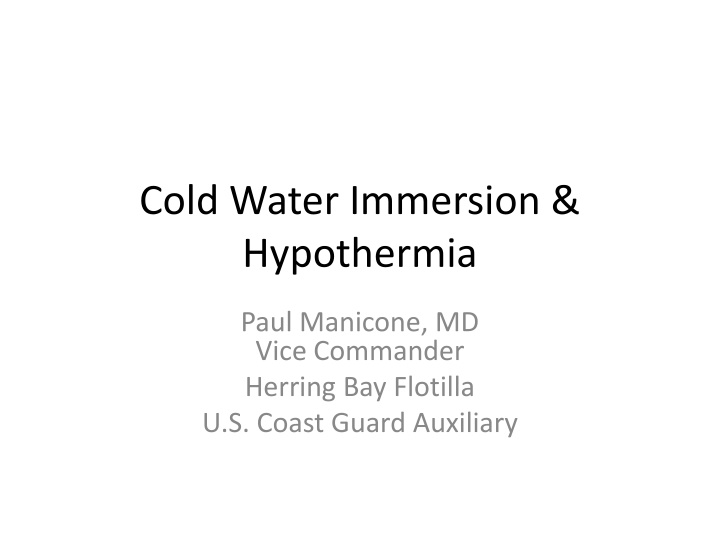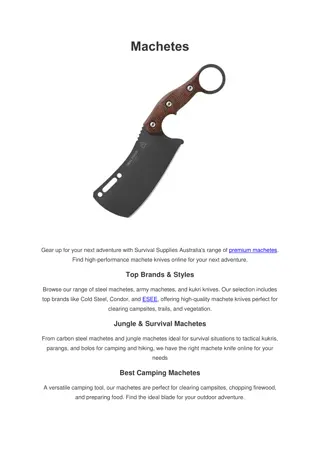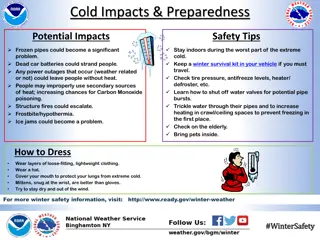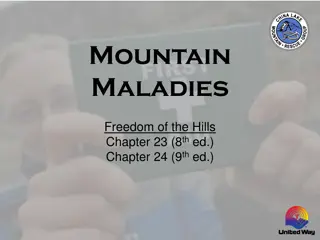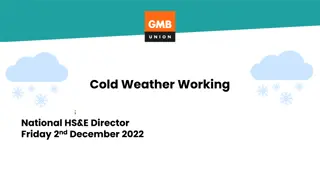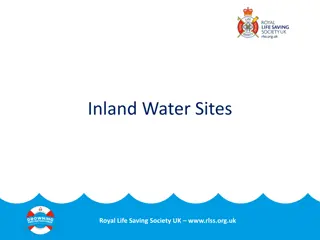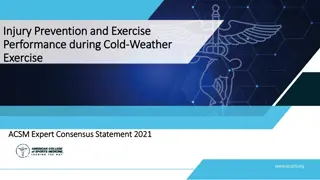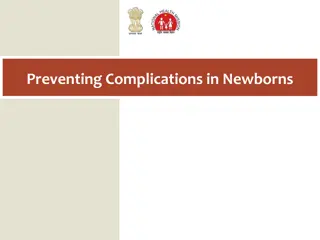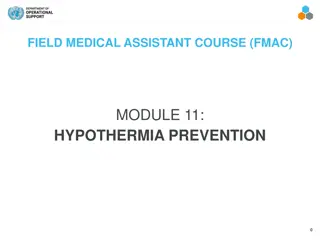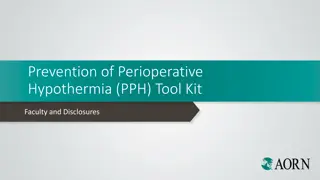Survival Strategies and Risks in Cold Water Immersion and Hypothermia Scenarios
Explore the critical information on cold water immersion and hypothermia, including severity levels, thermal regulations, and survival tips. Understand the dangers of reflexive gasp, stages of incapacitation, and the crucial 10 minutes window for purposeful movement. Learn how to differentiate between mild, moderate, and severe hypothermia, and the potential risks of unconsciousness and cardiac arrest. Gain insights into heat balance, thermal conductivity differences between water and air, and the importance of making informed decisions in challenging situations.
Download Presentation

Please find below an Image/Link to download the presentation.
The content on the website is provided AS IS for your information and personal use only. It may not be sold, licensed, or shared on other websites without obtaining consent from the author.If you encounter any issues during the download, it is possible that the publisher has removed the file from their server.
You are allowed to download the files provided on this website for personal or commercial use, subject to the condition that they are used lawfully. All files are the property of their respective owners.
The content on the website is provided AS IS for your information and personal use only. It may not be sold, licensed, or shared on other websites without obtaining consent from the author.
E N D
Presentation Transcript
Cold Water Immersion & Hypothermia Paul Manicone, MD Vice Commander Herring Bay Flotilla U.S. Coast Guard Auxiliary
Bad Decisions Make Great Stories If you survive!
Heat Balance Radiation Evaporation Convection Conduction Heat Production Activity Shivering External Heat
Water vs. Air Thermal Conductivity: Water: 0.6 W/mK Air: 0.025 W/mK Ratio: 0.6/0.025 = 24 Water is 24 times more conductive than air!
Hypothermia Severity Core Body Temperature Range Mild 90-95 degrees F Moderate 82-89 degrees F Severe Less than 82 degrees F
Mild Hypothermia Thermal Regulation intact Shivering Arms and Leg movements impaired Mental processing impaired
Moderate Hypothermia Thermal Regulation failing Decreased Shivering Decreased Consciousness
Severe Hypothermia Thermal regulation failure No shivering Unconscious At risk for cardiac arrest
Surviving in Cold Water Reflexive Gasp can cause drowning 12
Surviving in Cold Water 10 minutes of purposeful movement before cold incapacitation . Most deaths occur in this stage. 13
Surviving in Cold Water Unconscious stage. Only possible to survive to this stage with flotation 14
Surviving in Cold Water Drop in adrenaline production causes fainting and possibly cardiac arrest 15
Surviving in Cold Water Lifejacket should be on. Seek flotation Control your breathing in first minute Remain calm and still in water Do not swim to shore If possible stay with boat Keep clothes on If in a group, huddle Attempt communication 16
Surviving in Cold Water HELP position (Heat Escape Lessening Position) 17
Prevention of a Person Overboard Prevention is the key Always wear a PFD Do not sit on gunwale or bow Do not lean out of boat Use jacklines and tethers at night Dress appropriately for the conditions 18
Person Overboard: SAVE! S: Spotter A: Aids to floatation V: VHF (notify Coast Guard) E: Extraction Plan
Rescue & Treatment Gentle and Horizontal Remove wet clothing Insulate victim: fully wrapped cocoon Update Coast Guard Be mindful of the after drop in core body temperature
Rescue & Treatment Rescuer Safety first! Do not enter the water to perform a rescue Throw floatation to PIW Don the proper gear Notify Coast Guard Station (pan pan vs. may day) Make an extraction plan
Case Study #1 64 year old male departed Deale, MD on Wednesday November 6,2019 in a 28 foot fishing boat Slept on boat and continued fishing the following day Boat ran ashore on Kent Island, engine running. Local man reported sighting at 3:20pm. Massive search conducted: State/Local/USCG Victim s body recovered 2 days later, 18 miles from scene. No PFD on victim.
Case #1 Analysis NOAA satellite: water temp. 59 degrees 50-60 degrees considered very dangerous and immediately life threatening Exhaustion: 1-2 hours Survival: 1-6 hours Flotation: none Insulation: none Communication: none
Risk Mitigation What could this victim have done to increase his odds of survival? Wear a PFD Wear Floatation coat or Immersion suit Carry phone in dry bag Carry a handheld VHF radio Wear PLB Ignition kill switch Buddy aboard Avoid alcohol
Case Study #2 Muscoot Reservior, NY
Case Study #2 January 2, 2019; Fishing in Muscoot Reservoir 2 men: 47 & 48 years old 12 foot Aluminum rowboat Began fishing at 14:00 Spoke with relatives at 17:00; stated they intended to keep fishing as rain fell and sunset Found at 07:00 the following day: boat capsized. Bodies found with PFDs on.
Case Analysis Water Temperature: 38 degrees Exhaustion: 15-30 min Survival: 30-90 min Risks: tender open rowboat; raining; sunset Causes of death: 47 year old man: Hypothermia 48 year old man: Asphyxiation due to cold water drowning; hypothermia
Case Analysis Flotation: Yes. PFDs Insulation: None Communication: None on their person
Risk Mitigation What could these victims have done to increase their odds of survival? Wear Immersion suit or Dry suit Huddle together; HELP position Attach whistle to PFD Carry phone in dry bag Carry a handheld VHF radio Wear PLB
